Comments
ANIMAL WATCH - A picture of a large Pit Bull resting in an open carrier adorns a notice by Los Angeles Animal Services (City/LAAS) stating: “Emergency Preparedness -- Be Prepared,” Los Angeles County Animal Care and Control (DACC) similtaneously announced, “Emergency Animal Sheltering Sites for Los Angeles County Wildfires.
Both of these agencies affirm they are open to take in ALL animals in need during the current fire disaster.
Anyone who is able to foster an impounded pet during this crisis should contact their local shelter, because every cage and kennel is needed to accommodate the constant flow of animals needing rescue in Southern California’s fire-ravaged areas.
A Los Angeles County Animal Care and Control media release on January 11, 2025, assures us, “DACC is actively mobilizing resources and personnel to assist the communities of Pacific Palisades and Altadena in response to the ongoing fire evacuations.”
But it is still an overwhelming task, which is predicted to increase in difficulty with heavy winds starting on Tuesday.
MEDIA COVERAGE IS INCREASING PUBLIC AWARENESS
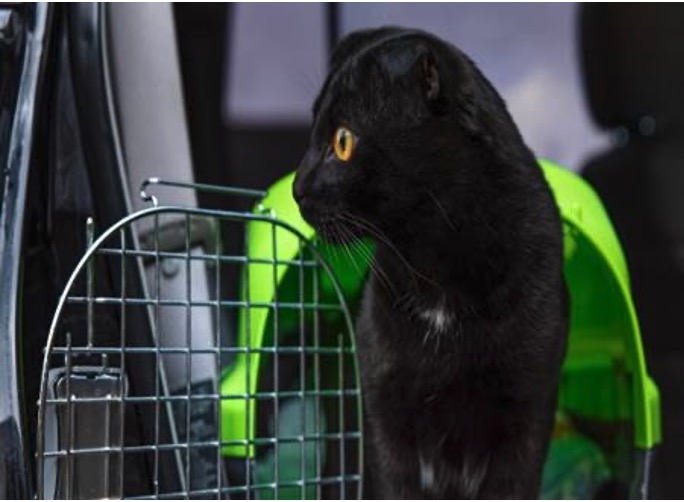
This photo of a black cat was taken after a Los Angeles pet sitter picked up clients’ cats to rescue them from risks of the fire.
If you find a lost pet, contact your local shelter and take the pet in to be checked for a microchip. The owner may be desperately trying to find a missing pet during this devastating crisis. But be aware that lost animals can be terrified and, if needed, Los Angeles City Animal Services and Los Angeles County Animal Control will send help.
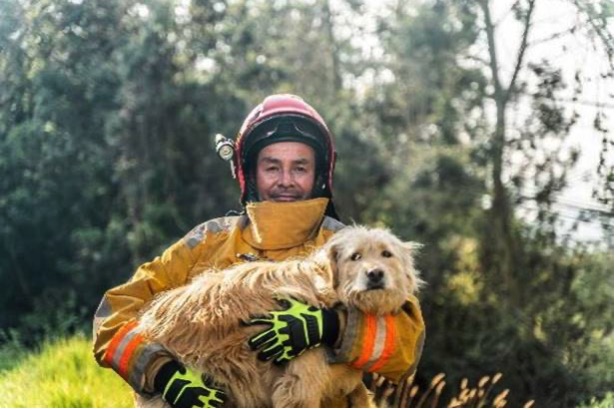
You and your pet are not alone.
A Los Angeles County Animal Care and Control media release on January 11, 2025, states, “DACC is actively mobilizing resources and personnel to assist the communities of Pacific Palisades and Altadena in response to the ongoing fire evacuations.”
CAN YOU PROVIDE TEMPORARY SHELTER FOR A PET?
Los Angeles City Animal Services reminds pet finders that, “A lost pet does not immediately need to be taken to a shelter.” and adds, “If you found a lost animal in your community and have the ability to keep it safe until the owner is located, here are some things you can do AFTER notifying your local animal control agency that you have the animal and, if requested, sending a photo.
Although this information has been widely posted, at the time of finding a lost animal, tensions can be high in regard to surrendering it to a shelter, so here are some alternatives and contacts that can help you make the decision on what steps you could take to directly get the animal back to its owner:
Register the found pet on Petco Love Lost and Social Media
Go to Petco Love Lost ,the free searchable national database that uses patented image recognition technology and register the found pet.
Utilize social media: Report the found pet on Pawboost or upload a photo and description on social media platforms that focus on your neighborhood like LA City Lost and Found Pets and Nextdoor.com.
If you take in a lost animal, be sure to notify these agencies and provide the location and contact information. For City residents, LAAS contact address and information is at “I found a pet.”
Angelenos can be helpful also by utilizing bilingual skills to assure notices are posted in as many languages as possible for residents who may not be aware of the services available and that a missing pet may be located in the care of a City or County of Los Angeles shelter.
Also, Wikipedia provides a very comprehensive list of contacts that may help you find a lost pet in the Los Angeles area.
HELP AVAILABLE FOR HORSES AND LARGE ANIMALS
The Los Angeles Equestrian Center located at 480 Riverside Dr., in Burbank 91506 and the Hansen Dam Recreation Centers located at 11770 Foothill Blvd., in Lake View Terrace, 91342, are open for those needing to evacuate large animals for safety.
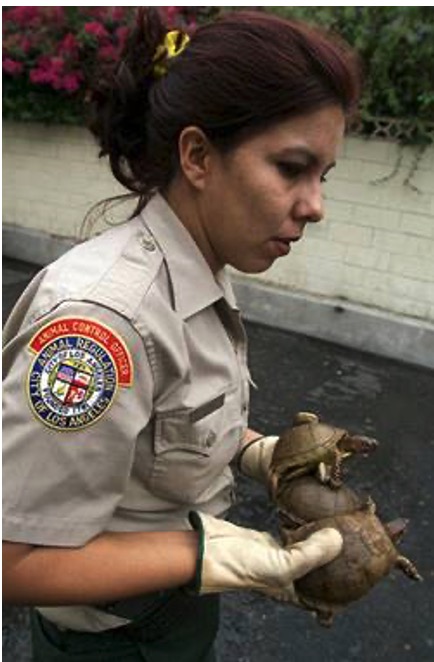
PLANNING AHEAD FOR ANIMAL/PET SAFETY
There are important tips on Planning Ahead and ensuring your pet is part of your family emergency plan, including Horse And Large Animal Emergency Preparedness (City of L.A.), which includes how to keep horses safe and identified In case of emergency; i.e., microchipping and wearing a bracelet.
IF YOU HAVE DOGS, KEEP STRONG LEASHES EASILY ACCESSIBLE
Visitors to my home laugh at the display of various types of strong (part metal chain for strength in a stressful situation) and colorful leashes and harnesses hanging on my living room wall permanently—close to the door and obvious to anyone who enters, in case I am not home and a disaster occurs. I also have drills with my three large dogs that I make fun, so that they will not balk if I, or a stranger--possibly an Animal Control Officer--quickly needs to secure them for evacuation for any reason.
Although you may not live in a high-risk fire area, keep extra bags of dry food rotated and available (kept on a shelf) that can easily be thrown into a vehicle, along with bowls to hold bottled water and have drills with your dogs on getting into the vehicle as a fun ride, so they won’t be suspicious if you need to load them quickly in case of an emergency. (And while you are making packets with human medication, don’t forget medication for pets.)
ANIMAL CONTROL OFFICERS - “BOOTS ON THE GROUND” SAVING LIVES
There is no more tragic or gratifying work than that done by Animal Control Officers during a fire emergency, but until the current proof of Mother Nature’s ability to burn, little--if any--attention has been paid to facing the dangers of rescuing animals left in homes or turned loose during a fire.
I spoke unofficially with several current and retired officers from Los Angeles City Animal Services and L.A. County Department of Animal Care and Control and other similar agencies to determine what it is like for them, going into these dangerous fire situations to rescue/remove terrified animals left behind when owners are forced to evacuate and have made no plan, or did not have time, to remove their pet(s) and/or farm animals.
There is no question that this task is not easy even with the best efforts and experience, due mainly to the shock of how fast a fire can move and the reactions of animals which are as frightened as humans but do not understand that the attempt to capture them suddenly is to save them.
Also, animals are extremely sensitive to the emotions of alarm and react by refusing to be constrained by a leash or cage or moved into a vehicle or trailer (for horses or large animals). In many of these cases, the owners are ordered to immediately evacuate and the terrified and uncooperative pet is left behind. In many cases, the animal does not appreciate or is terrified at being confronted by a stranger in a uniform and possibly a “catch pole” and little time to coax or cajole in order to save its life.
ALMOST ANY PET CAN BE MICROCHIPPED FOR IMMEDIATE ID
Most animals can be microchipped—this is not limited to dogs and cats. One former ACO said a parrot came into the shelter with a microchip, making it possible to locate the owner. This is also vitally important for horses and large mammals. It is also imperative that the name and contact information is kept updated.
“I wish that the public heard more about animal control efforts,” one officer said, but this may be the first contact for many animal owners. The officers take animal welfare seriously but, also, most enter the field just out of a love or fascination with these beautiful creatures.
ANIMAL CONTROL PERSONNEL – UNSUNG HEROES IN EMERGENCIES
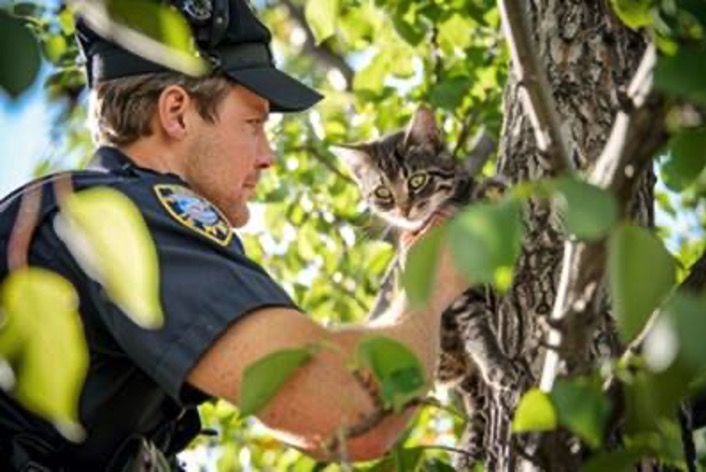
“Fire hits and travels so fast and in many cases with 80 to 95 mph winds,” an officer said. “The department is doing the best it can with the limited personnel available. We are running two large evacuation centers and small-animal evacuation centers and racing against time to get there (without sirens on our vehicles) to save and then care for the animal’s immediate needs or rush it to the shelter or a private veterinarian for care. It is a monumental task.
EMERGENCY COMMAND CENTER COORDINATION
There is a protocol, and coordination at an Emergency Command Center, where one of the most experienced officers from each City law-enforcement department, including Animal Services, reports immediately in any crisis and has the same training as all other law-enforcement departments. It is a coordinated effort by police, fire and animal control/services. Knowing the plan and everybody following it is vital so that it minimizes the dangers to each other and the animals.
This type of coordination is also necessary for the location and evacuation of livestock, because trailers must be available—including those owned by residents in the community and officers must be trained how to “load” frightened animals for transport to a stable or other area out of the fire zone.
Mock locations were set up to simulate disasters, including earthquakes, and officers learned how to deal with that in advance and the implementation was a seamless integration, with everyone being able to anticipate the next move required.
A senior LAAS officer advises that LAAS is still very much involved with the EOC, LAPD and LAFD, and is a part of the entire emergency operations, daily.
HISTORY INCLUDED “SEAMLESS INTEGRATION” AS A REQUIREMENT
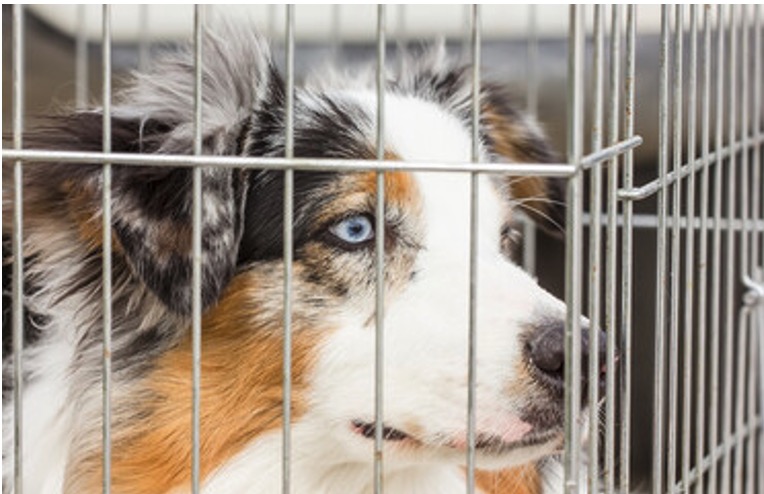
“Since the Oakland fire in 1970, (an important read at this time) California fire departments—training and equipment is essentially the same—can also integrate between various jurisdictions and know exactly what the next step will be,” a veteran officer confirmed, adding, “PD’s are the same with coordinated work patterns..”
CalAnimals (an association of animal control agencies in the state) has great resources for planning for disasters and encourages mutual aid for all CA Animal Services departments in times of emergencies.
During An Emergency, TAKE YOUR ANIMALS WITH YOU!
It is simply too dangerous to leave companion animals unattended during natural disasters. Be sure to sign up for any alerts available from law-enforcement or emergency services agencies in your area.
The best way to ensure the safety of your pets is to keep them with you; and, if necessary, evacuate with them. If that is not possible, keep them secured inside your residence or a safe location and notify neighbors of how to contact you at any time.
THE CONNECTIVITY OF HUMANITY AND A WARNING
With so much sadness and destruction surrounding us all, it is natural to want to donate in response to pleas for help. Be cautious of any solicitations for donations and never give cash or your bank account or credit card information. Carefully confirm the authenticity of any charity to assure it is legitimate.
Our hearts and prayers go out to all who are affected by this disaster—and, actually, that is all of us!
(Phyllis M. Daugherty is a former Los Angeles City employee, an animal activist and a contributor to CityWatch.)






